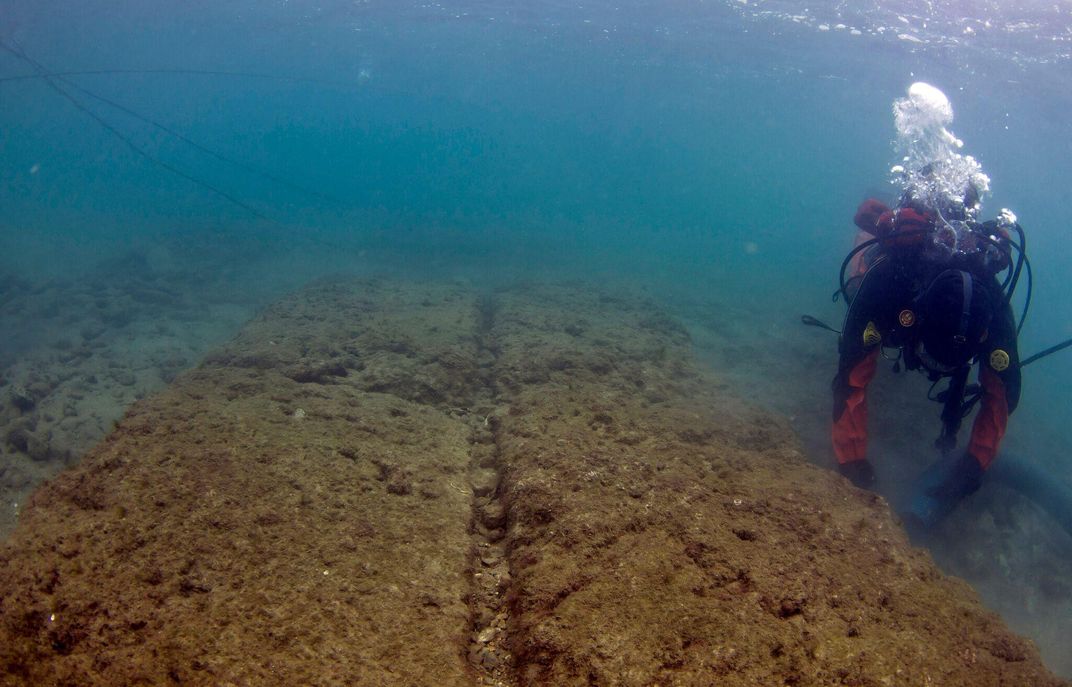Archaeologists Uncover Massive Naval Bases of the Ancient Athenians
Researchers have excavated ship sheds in the city of Piraeus that held triremes from the pivotal Battle of Salamis
/https://tf-cmsv2-smithsonianmag-media.s3.amazonaws.com/filer/22/1f/221f63c3-1107-465a-b8ef-56be0a226855/ship-shed_drawing.jpg)
If he toured Mounichia harbor today, Xerxes the Great, ruler of the Persian Empire, might scoff at the pleasure yachts and fisherman that can primarily be found on the waters just south of Athens, Greece. But 2,500 years ago, when the protected harbor in Piraeus, a port city on the outskirts of Athens, was a full on naval base bristling with armed sailors and mean-looking triremes? That might have made him think twice about trying to invade Greece.
Archaeologists are learning just how formidable Athens’ naval war machine really was after excavating parts of two of the three militarized harbors built in Piraeus. “We have identified, for the first time, the 5th century BC naval bases of Piraeus—the ship-sheds, the slipways and the harbor fortifications,” Bjørn Lovén, director of the Zea Harbor Project, which led the excavations, tells Philippe Bohstrom at Haaretz.
Lovén says the naval fortifications at one time housed about 400 fast and maneuverable ships called triremes. These vessels were tended to by 80,000 sailors and soldiers.
Lovén and his team most recently excavated the remains of six ship sheds, David DeMar writes at NewHistorian.com. The sheds stored triremes to protect them from marine woodworms and to keep the hot Mediterranean sun from shrinking their timbers and causing leaks. The sheds were huge—spread between the three ports of Piraeus (Mounichia, Zea and Kantharos), they covered 110,000 square meters or more than 1 million square feet, according to a video by Lovén. To put that number in comparison, that’s the size of approximately 17 football fields.
Carbon-14 dating of pottery and wooden foundations placed the ship-sheds between 520 and 480 BC. Those dates are significant because it likely means they housed triremes that took part in the Battle of Salamis in 480, a key event in Greek history.

In 490, the Athenians thwarted an invasion by Persian ruler Darius I at Marathon. But they knew the Persians would return. That’s why politician and general Themistocles convinced Athens to ramp up its navy, building 200 new triremes and housing them in almost impregnable naval bases in Piraeus.
The harbors could be closed off by large gates with fortified towers on either side, Bohstrom writes. Other fortifications along the coast could also attack approaching ships, making an advance on the naval bases by sea almost suicidal.
“It would have been an almost impregnable harbor,” another researcher on the project, Møller Nielsen tells Bohstrom.
Themistocles chose the right strategy. When the Persians attacked 10 years later under Xerxes I, the 400 Greek ships defeated 1,000 Persian vessels at the Battle of Salamis, a turning point of Greek history.
“It is difficult to predict what would have happened if the Greek fleet had lost at Salamis, but it is clear that a Persian victory would have had immense consequences for subsequent cultural and social developments in Europe,” Lovén says in a press release. “The victory at Salamis rightly echoes through history and awakens awe and inspiration around the world today.”
He also tells Discovery News that the battle influenced Athenian democracy. “All social classes rowed and fought aboard the triremes. I strongly believe this pivotal battle created an immensely strong bond among most of the citizens,” he says, “and in this way the Athenian navy was to develop into the backbone of the world's first democracy.”
The naval bases did eventually fall, however. Around 404 BC, Sparta and other Greek states defeated Athens at the end of the Peloponnesian War and tore down its naval fortifications in Piraeus.

